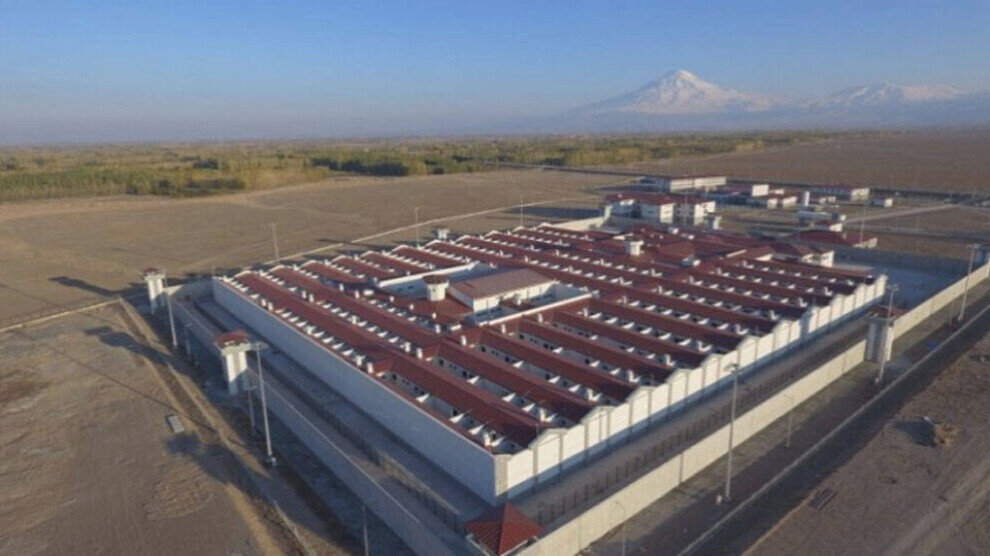S-Type prisons, new places of repression
Reports of torture and serious assaults in Turkey's new S-type isolation prisons are increasing. The political prisoners are subjected to a regime of isolation.
Reports of torture and serious assaults in Turkey's new S-type isolation prisons are increasing. The political prisoners are subjected to a regime of isolation.

New reports of assaults and human rights violations against prisoners in the new S-type isolation prisons in Turkey continue to increase. Most recently, prisoner Burhan Barut was tortured by guards with the so-called pig shackle. This cruel method consists of tying the body together under tension on the back at the neck, hands and feet and causes excruciating pain up to and including slow death by asphyxiation. According to Barut, he almost died in the five-hour torture. Such attacks are primarily aimed at political prisoners, for whom these S-type prisons were specially set up. There are currently more than a thousand political prisoners in the S-Type prisons. A testing ground for new forms of torture, these isolation prisons are the successors to F-type prisons has toilets.
More than a third of Type S inmates are political prisoners. Lawyer Naim Eminoğlu from the People's Lawyer's Office explained the special features of the new type of prison. So far, six of these prisons have been opened in Manavgat, Kavak, Bodrum, Antalya, Igdir and Kırşehir. There are currently 3,312 people held in these prisons, over a thousand of whom are political prisoners. Eminoğlu said that three S-type prisons were opened in 2021 and the total has increased to six by 1 September 2022. Each of these prisons has a capacity of 552 inmates. The People's Lawyer's Office currently serves three clients in S-type prisons.
Stricter isolation and surveillance down to the intimate area
"As is well known, the F-type prisons are built as prisons with small cells," Eminoğlu said, adding: “The capacity of an F-type prison is 368. There are two key differences between F-type prisons and S-type prisons, which consist of one- and three-person cells. In the S-type prisons, the number of one-person cells is higher than the number of three-person cells. In the F-type prisons, the ratio is exactly the opposite. Another difference is that in the three-person cells of the S-type prisons, there is a camera at the bottom. The fact that the bathroom and toilet area is also monitored in this lower area makes a clear difference and is problematic.”
Those who defend themselves risk life and health
Eminoğlu reported that his clients detained in S-type prisons are exposing increasing cases of torture. He said: “Our clients have told us about two different types of torture in S-type prisons. The first is related to the practice of strip searches upon admission to these prisons. That alone is torture, but it also includes the severe assaults that take place when people resist the practice. Our clients in Kavak and Antalya S-type prisons were victims of torture as a result of strip searches.”
The lawyer continued: “Subsequent reports of torture are related to the aforementioned cameras monitoring the private areas of the cells. Our clients in -S-type Manavgat Prison were attacked by the prison staff for covering with a napkin the camera that monitors the toilet and bathroom exit on the lower floor. Reports of this mistreatment appeared in many media. After the attack, both prisoners were forcibly thrown into padded cells.”
Continuous tightening since 2000
Eminoğlu underlined the continuity and development of the policy of isolation from political prisoners. With the prison massacre of 19 December 2000, the F-type prisons were enforced. Meanwhile, the isolation of political prisoners through the S and Y type prisons has reached a new dimension. This process is about breaking the political prisoners.
Isolation affects society as a whole
Eminoğlu continued: “Clearly, this situation does not only affect political prisoners. The isolation is to be extended from prisons to society as a whole. With the opening of S- and Y-type prisons, the message should be sent to the public: 'Don't go out on the streets, don't discuss, don't think, or you'll end up in these prisons.' The state wants to intimidate and isolate society with this new type of isolation prisons.”
Eminoğlu summarized the extent of isolation in the S-type prisons as follows: “The isolation practices in the S-type prisons go so far that prisoners are monitored and controlled with cameras at all times. Those who don't accept this are tortured. The prisons are architecturally similar to the F-types. So far, the isolation policy in the S-types has shown itself in the form of abuse by the guards and camera surveillance in the lower area of the three-person cells.”